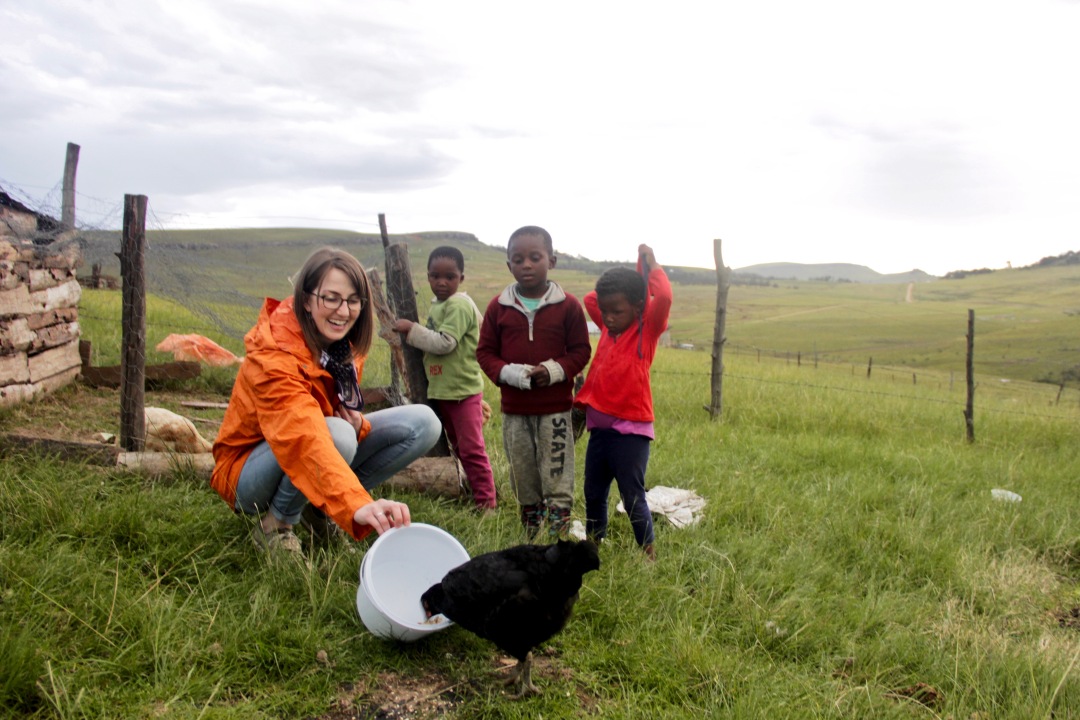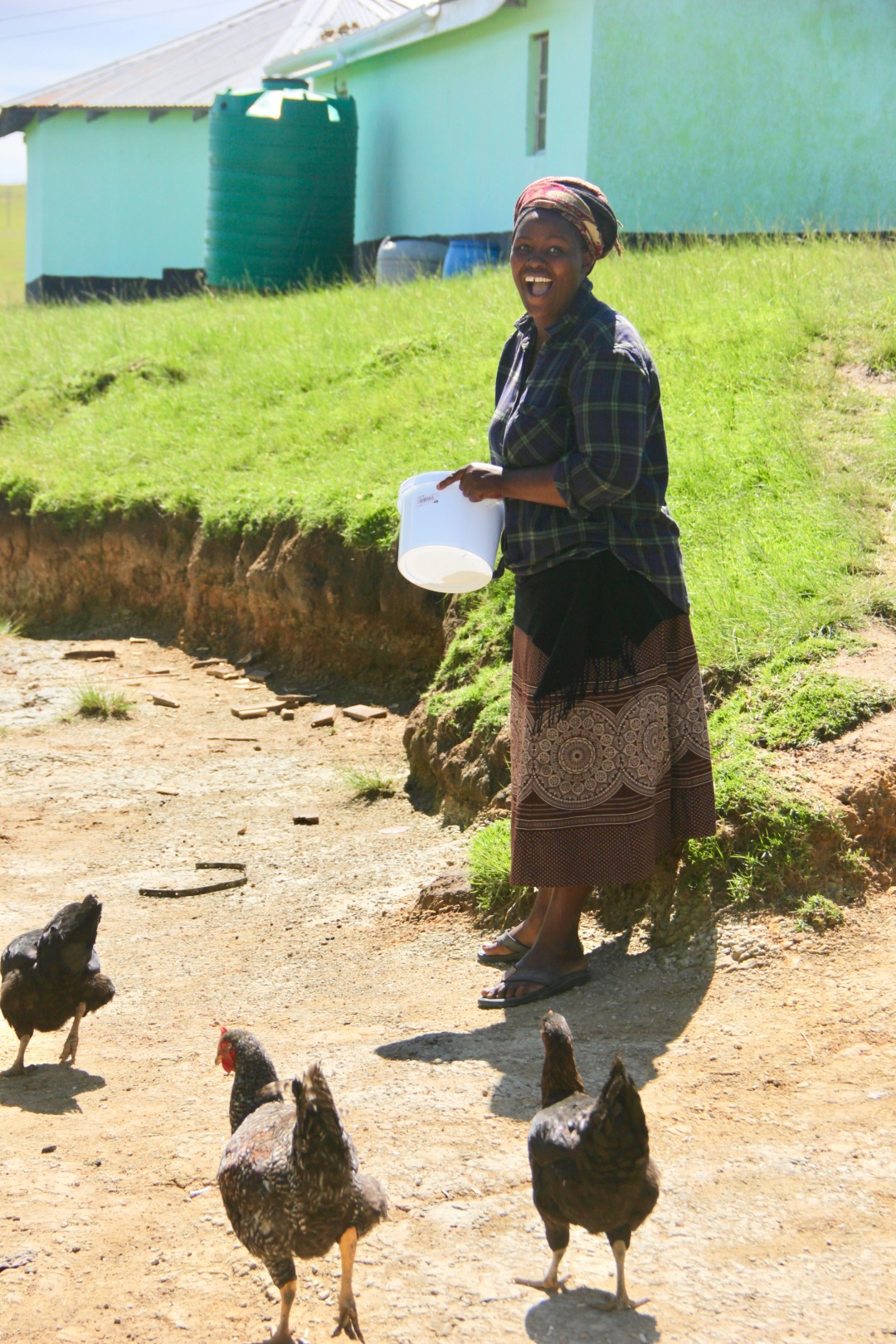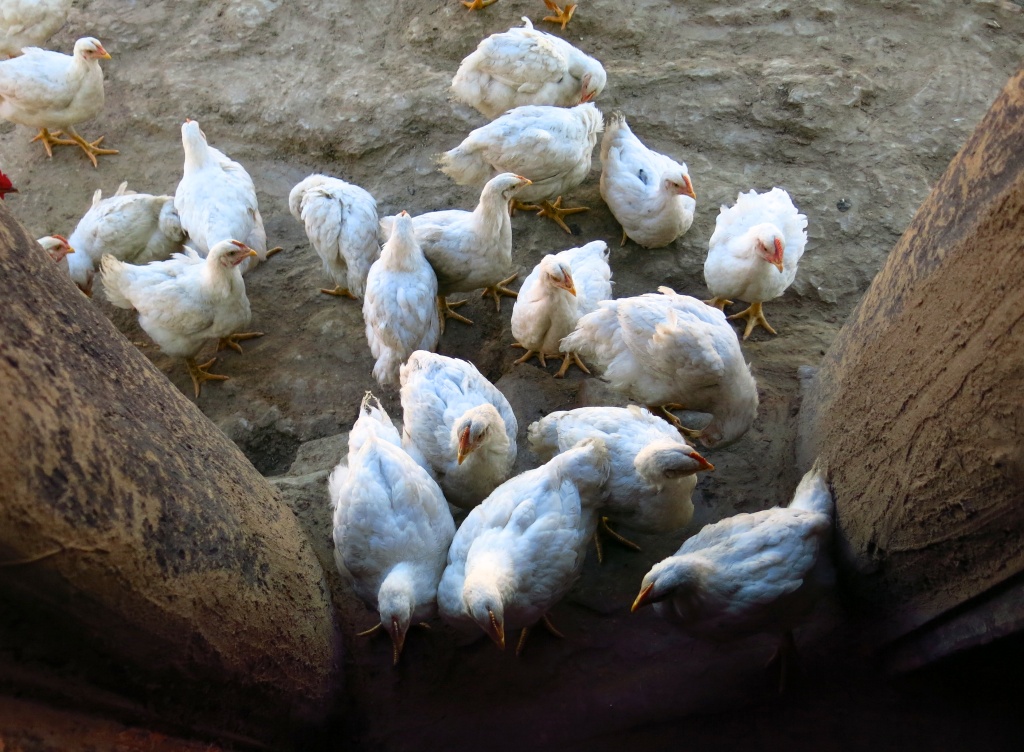Picture this: farming insects (thanks to our collaborator, MIGHTi) as a high-protein food source for healthier chickens.
Yes, that’s right…farming insects. Our US Agriculture Innovation Prize award-winning partner, the Mission to Improve Global Health Through Insects (MIGHTi), promotes edible insect production (also called minilivestock farming) as a sustainable protein source for human consumption and animal feed – one that supports healthy people and a healthy planet. This collaborative research project, co-founded by the LAND Project’s own Valerie Stull, promotes rural insect farming in food insecure regions through research and by supporting women’s cooperatives. MIGHTi aims to use culturally tailored, context specific minilivestock kits and methods that are environmentally and economically sustainable to help farmers produce an added protein source for rural diets and supplement for animal feed year round.

MIGHTi and the LAND Project are investigating the potential to farm a variety of insect species in South Africa. Because insect consumption is not commonplace among the populations the LAND Project works with, we are considering an alternative use for farmed insects: animal feed. Mealworms (Tenebrio molitor beetles) and black soldier fly (BSF) larvae (Hermetia illucens) are both easy to cultivate and offer a sustainable, less expensive, dietary protein source for poultry feed. Even small-scale producers could feasibly cultivate these insects and use them for poultry diets, which could significantly cut down on the cost of packaged chicken feed for farmers. There are environmental benefits of insect cultivation, too. In general, edible insects and those reared for animal feed are more environmentally friendly than conventional livestock and are nutrient dense; they require little labor, little water, and can quickly recycle agricultural and food waste making them an ideal food/feed source for resource poor areas.
Mealworms are hardy insects that can sustain cold temperatures, low humidity, and digest a variety of feed substrates. They are an ideal feed for chickens, thanks to their nutrient dense larvae, and they require little labor to cultivate. Mealworms can consume grains, greens, and most dry organic matter. Farming habitats can be as simple as a bucket, and mealworms like it dark and relatively crowded.
BSF are abundant insects, naturally found near manure heaps of poultry, cattle, and pigs. Similarly, the larvae congregate on organic waste including vegetables, distillers’ waste, coffee bean pulp, fish offal, decaying organic matter, and spoiled food waste. Their principle food source in nature is manure, however.
BSF have potential to address problems with animal and food waste while simultaneously producing a nutrient-dense feed source for poultry, pigs, cattle, and fish. The larvae have voracious appetites, and mature larvae (prepupae) can easily be harvested for use as feed for animals. Fortunately, BSF are not considered a pest, as adults are not attracted to food or human habitats. They are also unlikely vectors of human disease. Adult BSF do not need to eat; they survive on body fat stores remaining from the larval stage. They do not bite or sting humans and have a relatively short adult lifespan (5-8 days). BSF have been successfully cultivated for animal feed and waste management in a variety of climates and contexts, and they are practical candidates for mass production thanks to their waste reduction focused lifestyles.
In March, 2018, the LAND Project offered a beginning workshop on mealworm farming for poultry feed to local residents in Manzimdaka. Several farmers are now growing mealworms at home to feed chicks and adult chickens. The LAND Project aims to work with farmers to test, refine, and modify the insect farming process as needed for the harsh, high altitude climate.

The LAND Project is exploring insect agriculture for chicken feed in South Africa.

